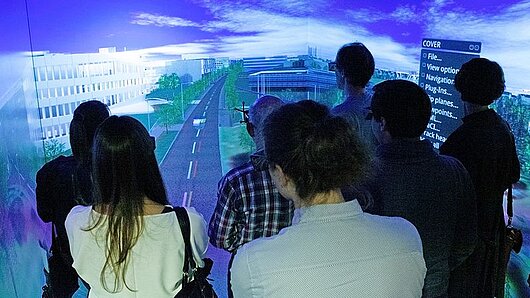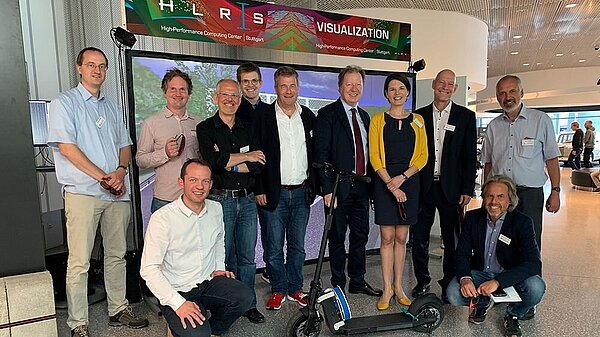High-Performance Computing Center Stuttgart

In cooperation with the Institute for Road and Transport Science (Institut für Straßen- und Verkehrswesen - ISV) and Institute for Internal Combustion Engines and Automotive Engineering (Institut für Verbrennungsmotoren und Kraftfahrwesen - IVK) at the University of Stuttgart, the Visualization Department at the High-Performance Computing Center Stuttgart has been helping to develop tools that use virtual reality to model new mobility concepts.
The technology is being developed in conjunction with a University of Stuttgart project called MOBILAB, which is participating in a competition organized by the Baden-Württemberg Ministry of Science, Research and the Arts to produce new, practical concepts for a zero-emissions campus. To support this effort, the HLRS helped develop a virtual model of the University of Stuttgart's Vaihingen campus.

Walking into an immersive, 3D, virtual reality environment called the CAVE, users can navigate their way through a digital model of the campus. Computers set the mix of transportation modes — including car, bus, and foot traffic — in motion, while software enables users to adjust parameters and observe the effects of these changes in real time. This unique tool makes it possible to quickly experience different mobility options without the need to conduct experiments in the real world, which would be impossible at this scale.
HLRS and its partners presented the technology on September 14-15, 2019, when the Mercedes-Benz Museum in Stuttgart hosted a public event showcasing new technologies and activities that are paving the way for the future of mobility design. Titled "Vision Smart City: Future Mobility, Today," the event provided an opportunity to learn about new mobility concepts, particularly related to issues such as sustainable mobility, micromobility, car sharing, citizen participation, and autonomous driving, among other topics.
At the event, visitors to the exhibit experienced a mobile version of the CAVE. Members of the the HLRS Visualization Team together with its project partners demonstrated how simulation using virtual reality can support mobility planning, along with other applications of virtual reality for urban research.
— Christopher Williams